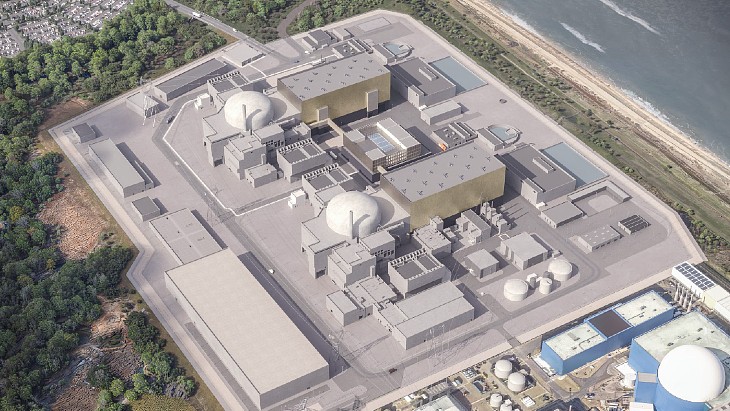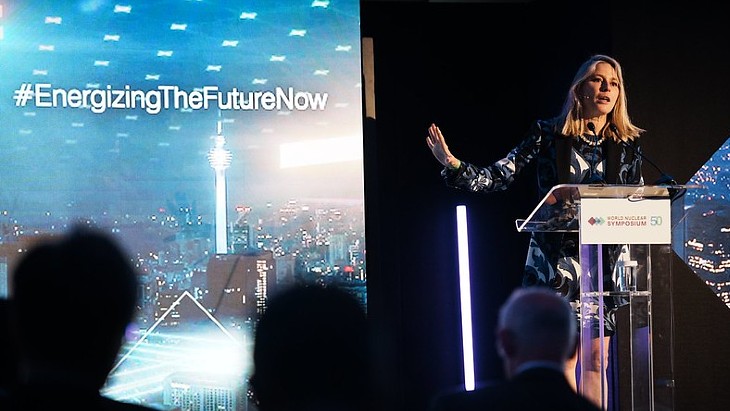Declining profitability and increased costs have forced Swedish utility Vattenfall to decide to close units 1 and 2 of the Ringhals nuclear power plant earlier than previously planned. The decision would see the units shut between 2018 and 2020, rather than around 2025.
.jpg) |
| Ringhals units 1 and 2 (Image: Vattenfall) |
Vattenfall - which owns a 70.4% stake in the Ringhals plant - said today that it has informed co-owner EOn (holder of the remaining 29.6%) of its decision. The company said that the final decision to decommission the reactors early has yet to be made by the board of directors of the Ringhals plant and requires the agreement of EOn.
Vattenfall's head of business area generation Torbjörn Wahlborg said, "Unfortunately, we see market conditions with continued low electricity prices in the coming years. At the same time, we are facing increasing production costs."
He added, "Vattenfall's decision is business driven. It is of course regrettable to close down well-functioning production units but sometimes this is inevitable."
Referring to a tax imposed on nuclear plant operators, World Nuclear Association director general Agneta Rising commented, "Sweden has for a long time been a role model in the world for its clean and reliable source of power generation through nuclear energy. Now the country is taking the destructive step of increasing the 'capacity tax' on nuclear for no other reason than political opposition to nuclear per se. This amounts to twice the salaries of all of a nuclear plant's employees. It is more than any utility could take and Vattenfall has made the decision to close two units at Ringhals five years earlier than it planned."
Vattenfall said the book value of Ringhals units 1 and 2 in the group's consolidated balance sheet was SEK 15.1 billion ($1.8 billion) as of the end of March. It said the financial impact of the closure is currently being investigated.
"Vattenfall's decision is business driven. It is of course regrettable to close down well-functioning production units but sometimes this is inevitable."
Torbjörn Wahlborg,
Vattenfall
According to Vattenfall, the Ringhals plant produces some 20% of all the electricity used in Sweden. The four reactors produce around 28 TWh in a normal year.
Ringhals unit 1 is an 878 MWe boiling water reactor (BWR) which started operating in 1976 and had been due to be closed in 2026, while unit 2 is an 807 MWe pressurized water reactor (PWR) that began operation in 1975 and scheduled to shut down in 2025. Ringhals 3 and 4 are larger PWRs that started up in the early 1980s.
The company said that, with regards to Ringhals 3 and 4 and its three other reactors (Forsmark 1, 2 and 3), plans remain to operate these for at least 60 years, until the beginning of the 2040s.
Tough market conditions
The announcement came as the utility released its financial results for the first quarter of 2015. While net sales in the January to March period totalled SEK 45.4 billion ($5.3 billion), compared with SEK 45.9 billion ($5.4 billion) in the first quarter of 2014, operating profit fell from SEK 11.8 billion ($1.4 billion) to SEK 8.4 billion ($1.0 billion). Profit after tax in the first quarter of 2015 totalled SEK 5.0 billion ($584 million), compared with SEK 8.2 billion ($958 million) a year earlier.
Vattenfall president and CEO Magnus Hall said, "Demand for electricity remained weak during the first quarter of the year, and electricity prices have continued to fall. The protection we have in the form of forward contracts entered into at higher price levels is gradually decreasing, entailing that the current low wholesale prices are having a gradually bigger impact on Vattenfall's earnings."
He added, "We need to continue lowering our costs and will reduce the number of employees corresponding to approximately 1000 full-time equivalents."
Last December, the Swedish government backed the nuclear regulator's recommendation for an almost doubling of the fees paid by utilities into the country's nuclear waste fund over the 2015-2017 period. This led to an increase in the tax from 2.2 öre (0.29 US cents) per kWh of nuclear electricity produced in 2014 to 3.8 öre (0.49 US cents) per kWh.
Researched and written
by World Nuclear News




_55530.jpg)
_42372.jpg)
_37521_70699.jpg)

_76087_55556.jpg)




